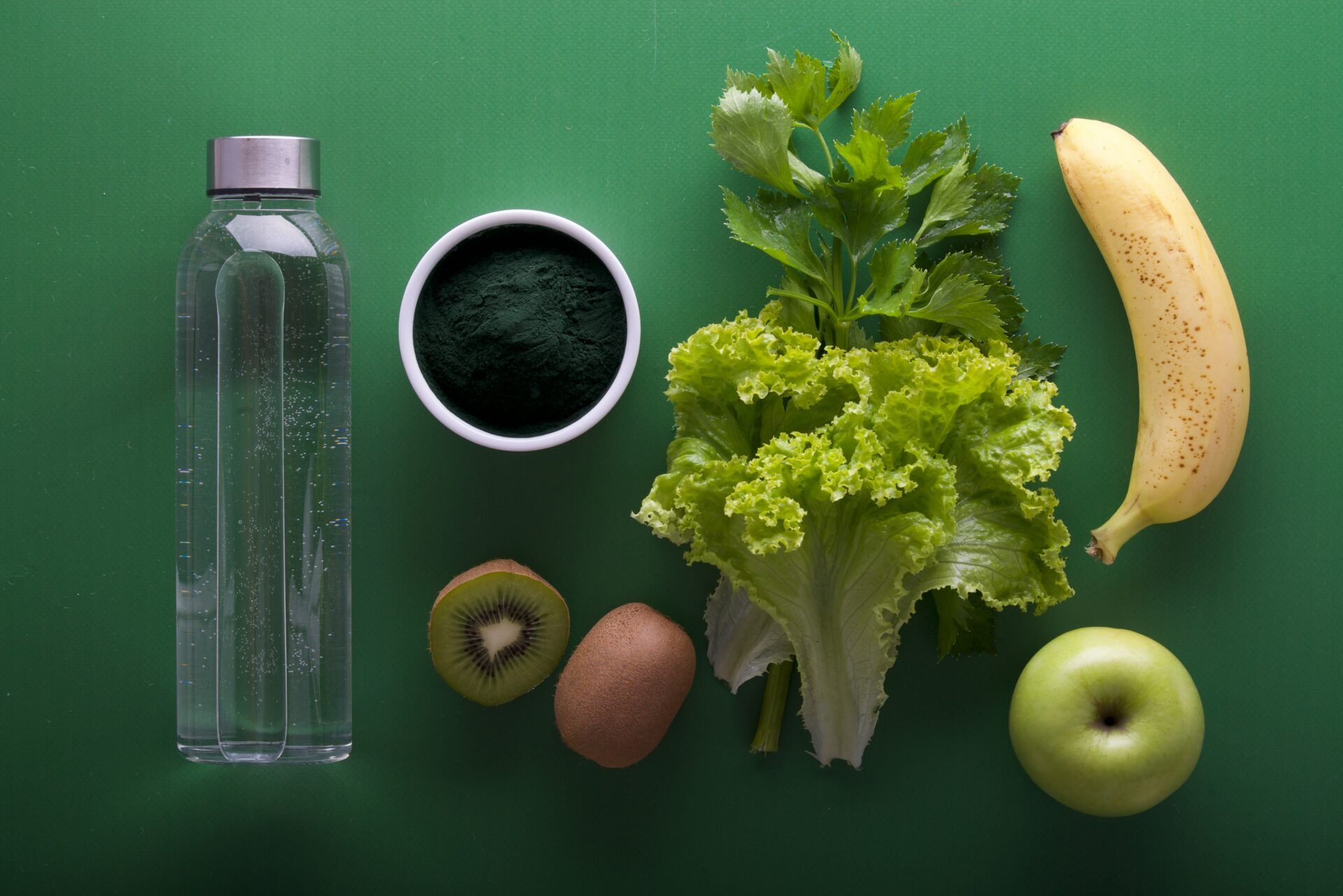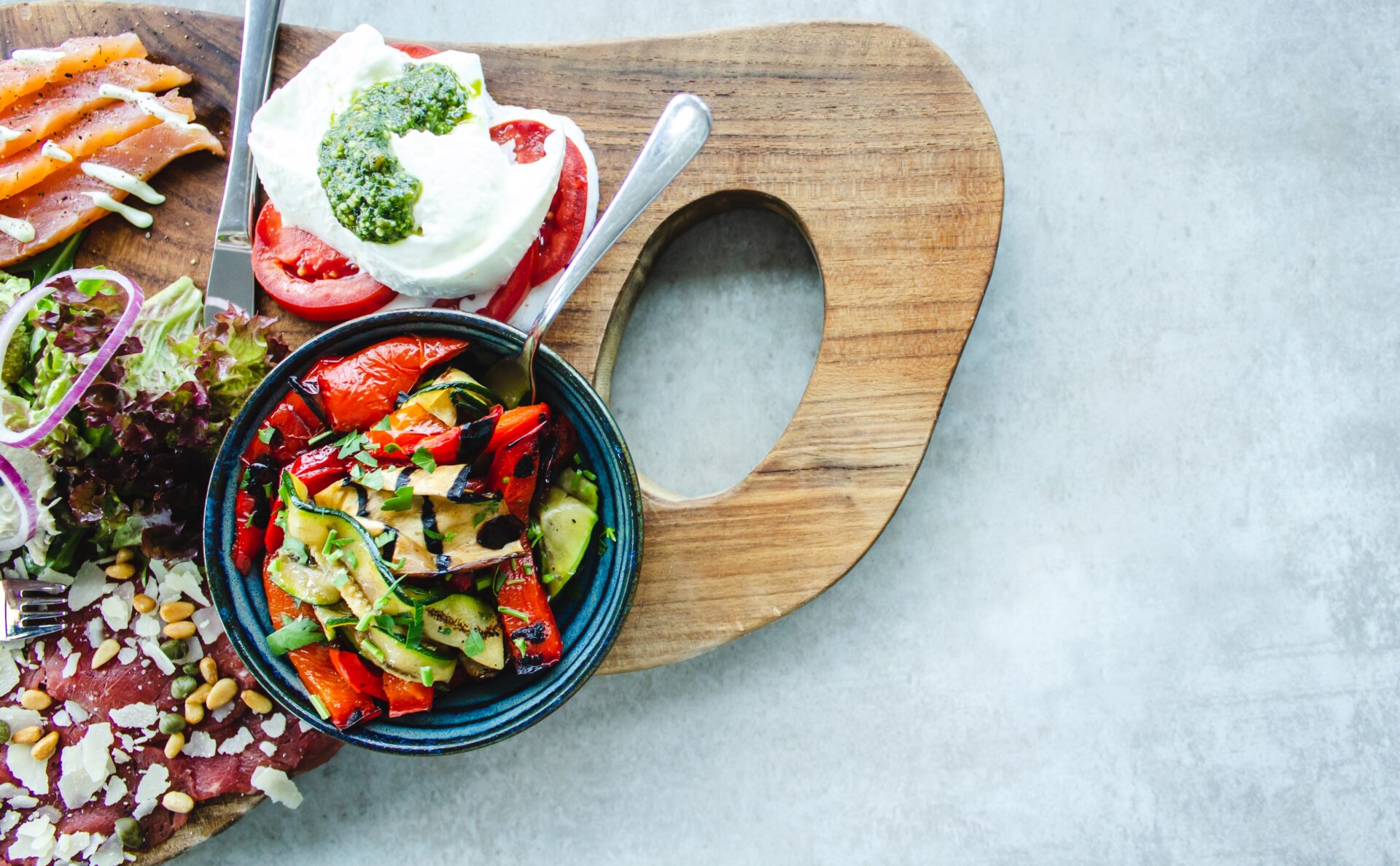Meal planning is not just a trend; it is a powerful tool that can help you achieve your health and fitness goals. By taking the time to plan your meals in advance, you can fuel your body with nutritious and delicious food, ensuring that you stay on track throughout the week. In this article, we will explore the importance of meal planning, the benefits it offers, how you can get started on your own meal planning journey and a Timeless designed meal plan made just for you.
The Importance of Meal Planning for a Healthier Body
Meal planning is a proactive approach to nutrition that allows you to take control of your diet and make conscious choices about what you put into your body. By planning your meals in advance, you can ensure that you are getting all the necessary nutrients, vitamins, and minerals that your body needs to function optimally. Meal planning also helps to eliminate the guesswork from your daily meals and can prevent you from making impulsive and unhealthy food choices.
Additionally, meal planning can save you time and money. By planning your meals in advance, you can streamline your grocery shopping and cooking process. This means less time spent wandering aimlessly in the grocery store and more time doing the things you love. Meal planning can also help you stick to a budget by allowing you to buy ingredients in bulk and make use of leftovers.
Benefits of Meal Planning
There are numerous benefits to incorporating meal planning into your lifestyle. Firstly, meal planning can help you maintain a healthier weight. By preparing your meals in advance, you can control portion sizes and ensure that you are eating balanced meals. This can prevent overeating and promote weight loss or weight maintenance.
Meal planning also allows for better time management. By knowing exactly what you will eat each day, you can eliminate the stress of figuring out what to cook for dinner after a long day at work. This can free up more time for relaxation, hobbies, or spending time with loved ones.
Furthermore, meal planning can improve your overall well-being. When you nourish your body with wholesome and nutritious meals, you will experience increased energy levels, improved digestion, and enhanced mental clarity. Meal planning can also help you develop a healthier relationship with food and reduce the likelihood of emotional eating or reaching for unhealthy snacks.
How to Start Meal Planning
Starting your meal planning journey may seem overwhelming at first, but with a few simple steps, you can get started on the right track. The first step is to set clear goals for your meal planning. Are you looking to lose weight, gain muscle, or simply eat healthier? Once you have defined your goals, you can tailor your meal planning accordingly.
Next, take inventory of your pantry and refrigerator. Make a list of the ingredients you have on hand and identify any items that need to be used before they expire. This will help you plan your meals around what you already have and reduce food waste.
Once you have an idea of what ingredients you have, it’s time to start brainstorming meal ideas. Consider your preferences, dietary restrictions, and nutritional needs when coming up with meal ideas. Aim for a balance of protein, carbohydrates, and healthy fats in each meal.
After you have a list of meal ideas, create a shopping list based on the ingredients you need. Be sure to stick to your list when you go grocery shopping to avoid impulse purchases.
Creating a Meal Planning Schedule
To make meal planning a seamless part of your routine, it is helpful to create a meal planning schedule. Designate a specific day and time each week to plan your meals and create your shopping list. This consistency will help you stay organized and ensure that you always have nutritious meals on hand.
When creating your meal plan, consider your schedule for the week. If you have a busy day ahead, plan for quick and easy meals that require minimal preparation time. On days when you have more time, you can experiment with new recipes or try out more elaborate dishes.
It is also important to leave room for flexibility in your meal planning schedule. Life happens, and there may be times when you are unable to stick to your planned meals. By having backup options and a well-stocked pantry, you can easily adapt your meal plans when needed.
Healthy Meal Planning Tips and Tricks
To make the most of your meal planning efforts, here are some additional tips and tricks to keep in mind:
Plan for leftovers
When cooking, intentionally make extra portions to have leftovers for the next day’s lunch or dinner. This saves time and ensures that you have a nutritious meal ready to go.
Prep ingredients in advance
On your designated meal planning day, take some time to wash, chop, and prep ingredients. This will make your cooking process faster and more enjoyable throughout the week.
Use versatile ingredients
Choose ingredients that can be used in multiple recipes to maximize your grocery budget. For example, a batch of roasted vegetables can be used in salads, wraps, or as a side dish.
Embrace freezer meals
Prepare meals in advance and freeze them for busy days when you don’t have time to cook. Soups, stews, and casseroles are great options for freezer-friendly meals.
Get the family involved
If you have a family, involve them in the meal planning process. This not only teaches children about healthy eating but also allows everyone to have a say in the meals they will be enjoying.
By incorporating these tips and tricks into your meal planning routine, you can make the process more efficient and enjoyable.
Meal Prepping and Batch Cooking for Efficient Meal Planning
Meal prepping and batch cooking go hand in hand with meal planning. These techniques can help you save time and ensure that you always have healthy meals on hand, even on your busiest days.
Meal prepping involves preparing components of your meals in advance, such as chopping vegetables, cooking grains, or marinating proteins. By doing this prep work ahead of time, you can significantly reduce your cooking time during the week.
Batch cooking, on the other hand, involves cooking large quantities of food at once and portioning it out for multiple meals. For example, you can prepare a big batch of chili or curry and store it in individual containers for easy grab-and- go meals.
To get started with meal prepping and batch cooking, set aside a few hours on your designated meal planning day to prepare your ingredients and cook your meals. Invest in quality storage containers that are freezer-safe and microwave- safe to store your prepped ingredients and meals.
By dedicating a small amount of time each week to meal prepping and batch cooking, you can save hours in the kitchen and ensure that you always have nutritious meals within reach.
Meal Planning for Different Dietary Needs
Meal planning is flexible and can be tailored to accommodate different dietary needs. Whether you are vegan, gluten- free, or have other dietary restrictions, meal planning can help you create delicious and nutritious meals that align with your needs.
For vegans, meal planning can ensure that you are getting all the necessary nutrients from plant-based sources. Focus on incorporating a variety of legumes, whole grains, fruits, and vegetables into your meals. Experiment with different flavors and cuisines to keep your meals exciting and diverse.
If you are following a gluten-free diet, meal planning can help you identify safe and delicious alternatives to gluten- containing grains. Stock up on gluten-free grains like quinoa, rice, and oats, and explore recipes that utilize these ingredients.
For individuals with food allergies or sensitivities, meal planning is essential for preventing accidental exposure to allergens. By planning your meals in advance, you can carefully select ingredients and ensure that your meals are safe and free from allergens.
Meal Planning for Weight Loss or Muscle Gain
Meal planning is a valuable tool for individuals looking to lose weight or gain muscle. By carefully planning your meals, you can create a calorie deficit or surplus that supports your goals.
For weight loss, aim to create a calorie deficit by consuming fewer calories than your body needs. Focus on incorporating nutrient-dense foods that are low in calories but high in fiber and protein. This will help you feel satisfied and full while staying within your calorie limit.
If your goal is to gain muscle, meal planning can help you ensure that you are consuming enough calories and nutrients to support muscle growth. Focus on incorporating lean proteins, whole grains, and healthy fats into your meals. It is also important to eat regularly throughout the day to provide your muscles with a constant supply of nutrients.
Consulting with a registered dietitian or nutritionist can be beneficial when meal planning for weight loss or muscle gain. They can help you create a personalized meal plan that takes into account your specific goals, body composition, and activity level.
Meal Planning for Busy Individuals or Families
For busy individuals or families, meal planning is a game-changer. By having your meals planned and prepped in advance, you can save time and ensure that you always have healthy options available.
To make meal planning more manageable for busy schedules, consider incorporating quick and easy recipes into your meal plan. Choose meals that require minimal cooking time and utilize shortcuts like pre-cut vegetables or pre-cooked proteins.
If you have a family, involve everyone in the meal planning process to ensure that everyone’s preferences and dietary needs are considered. You can even designate specific days for each family member to contribute a meal idea or take turns cooking.
Another time-saving tip is to cook in bulk. Prepare large portions of meals and freeze individual servings for future use. This way, you can easily grab a homemade meal when time is limited.
Meal Planning on a Budget
Contrary to popular belief, meal planning can actually help you save money on your grocery bill. By planning your meals
in advance, you can avoid impulse purchases and reduce food waste.
To meal plan on a budget, start by creating a list of affordable staple ingredients that can be used in multiple meals. These can include items like rice, beans, lentils, pasta, canned tomatoes, and frozen vegetables.
When grocery shopping, compare prices and look for sales or discounts. Buying in bulk can also be cost-effective, especially for non-perishable items like grains or spices. Consider purchasing generic or store-branded products, as they are often cheaper than name brands.
Additionally, make use of leftovers and repurpose them into new meals. For example, leftover roasted chicken can be used in sandwiches or salads, and overripe fruits can be blended into smoothies or used in baking.
By being mindful of your budget and utilizing cost-effective ingredients, you can enjoy nutritious and delicious meals without breaking the bank.
Meal Planning for Specific Goals
Meal planning can be tailored to specific goals, such as increasing energy levels, improving digestion, or supporting overall well-being. By focusing on specific nutrients and incorporating certain foods into your meals, you can optimize your meal plan for your desired outcome.
For increased energy levels, prioritize complex carbohydrates like whole grains and fruits, as they provide a sustained release of energy. Include protein-rich foods like lean meats, fish, tofu, or legumes to keep you feeling full and satisfied. Don’t forget to incorporate healthy fats from sources like avocados, nuts, and seeds for added energy and satiety.
To improve digestion, include foods that are rich in fiber, such as fruits, vegetables, whole grains, and legumes. These foods promote regular bowel movements and support a healthy gut microbiome. Additionally, staying hydrated by drinking plenty of water and herbal teas can aid in digestion.
For overall well-being, aim for a balanced and varied diet that includes a wide range of nutrients. Incorporate a variety of fruits, vegetables, whole grains, lean proteins, and healthy fats into your meals. Experiment with different flavors and cuisines to keep your meals exciting and enjoyable.
Meal Planning for the Weekend and Special Occasions
While meal planning is often associated with weekdays, it can also be applied to the weekends and special occasions. Planning your meals during these times can help you stay on track and make healthier choices, even when faced with temptations.
During the weekend, take some time to plan your meals and prepare any necessary ingredients in advance. This will help you avoid the temptation to order takeout or rely on convenience foods.
For special occasions, such as birthdays or holidays, incorporate healthier versions of your favorite dishes into your meal plan. Look for recipes that offer healthier alternatives to traditional ingredients or cooking methods. For example, you can make baked sweet potato fries instead of deep-fried ones or use Greek yogurt as a substitute for heavy cream in sauces.
It is important to remember that special occasions are meant to be enjoyed, and it is okay to indulge occasionally. By incorporating healthier options into your meal plan, you can strike a balance between indulgence and maintaining your health goals.
Harness the Power of Meal Planning for a Stronger and Healthier Body
Meal planning is a powerful tool that can help you achieve a stronger and healthier body. By taking the time to plan your meals in advance, you can ensure that you are nourishing your body with the right nutrients and avoiding unhealthy food choices. Meal planning offers numerous benefits, including time and money savings, improved weight management, increased energy levels, and enhanced overall well-being.
To get started with meal planning, set clear goals, take inventory of your pantry, and brainstorm meal ideas. Utilize meal planning tools and resources, create a schedule that works for you, and incorporate healthy meal planning tips and tricks. Explore meal prepping and batch cooking for increased efficiency, and adapt your meal planning to accommodate different dietary needs or specific goals. Finally, remember to embrace flexibility and enjoy the process of nourishing your body through meal planning.
Harness the power of meal planning and experience the magic of a stronger and healthier body from Monday to Friday and beyond!
Here’s a Timeless food plan for Monday through Friday with ingredients and estimated prep time:
Monday:
- Breakfast: Overnight oats with mixed berries and almond milk (Prep time: 5 minutes)
- Lunch: Grilled chicken salad with mixed greens, cherry tomatoes, cucumbers, and a lemon vinaigrette dressing (Prep time: 20 minutes)
- Snack: Carrot sticks with hummus (Prep time: 5 minutes)
- Dinner: Baked salmon with roasted asparagus and quinoa (Prep time: 30 minutes)
Tuesday:
- Breakfast: Spinach and mushroom omelet with whole wheat toast (Prep time: 15 minutes)
- Lunch: Quinoa salad with black beans, corn, diced bell peppers, and a lime-cilantro dressing (Prep time: 20 minutes)
- Snack: Greek yogurt with mixed nuts and a drizzle of honey (Prep time: 5 minutes)
- Dinner: Grilled chicken breast with steamed broccoli and brown rice (Prep time: 25 minutes)
Wednesday:
- Breakfast: Avocado toast on whole grain bread with sliced tomatoes and a sprinkle of feta cheese (Prep time: 10 minutes)
- Lunch: Lentil soup with a side of mixed greens and a lemon-tahini dressing (Prep time: 30 minutes)
- Snack: Apple slices with almond butter (Prep time: 5 minutes)
- Dinner: Stir-fried tofu with mixed vegetables and brown rice (Prep time: 25 minutes)
Thursday:
- Breakfast: Greek yogurt with sliced bananas, chia seeds, and a drizzle of maple syrup (Prep time: 5 minutes)
- Lunch: Whole wheat wrap with grilled chicken, avocado, lettuce, and tomato (Prep time: 15 minutes)
- Snack: Homemade trail mix (Prep time: 5 minutes)
- Dinner: Baked cod with roasted sweet potatoes and sautéed kale (Prep time: 30 minutes)
Friday:
- Breakfast: Protein smoothie with spinach, banana, almond milk, and a scoop of protein powder (Prep time: 5 minutes)
- Lunch: Quinoa and black bean stuffed bell peppers (Prep time: 30 minutes)
- Snack: Celery sticks with peanut butter (Prep time: 5 minutes)
- Dinner: Grilled shrimp skewers with grilled zucchini and couscous (Prep time: 25 minutes)
Feel free to adjust the recipes and prep time according to your preferences and cooking skills. Enjoy your healthy and delicious meals throughout the week!





Responses